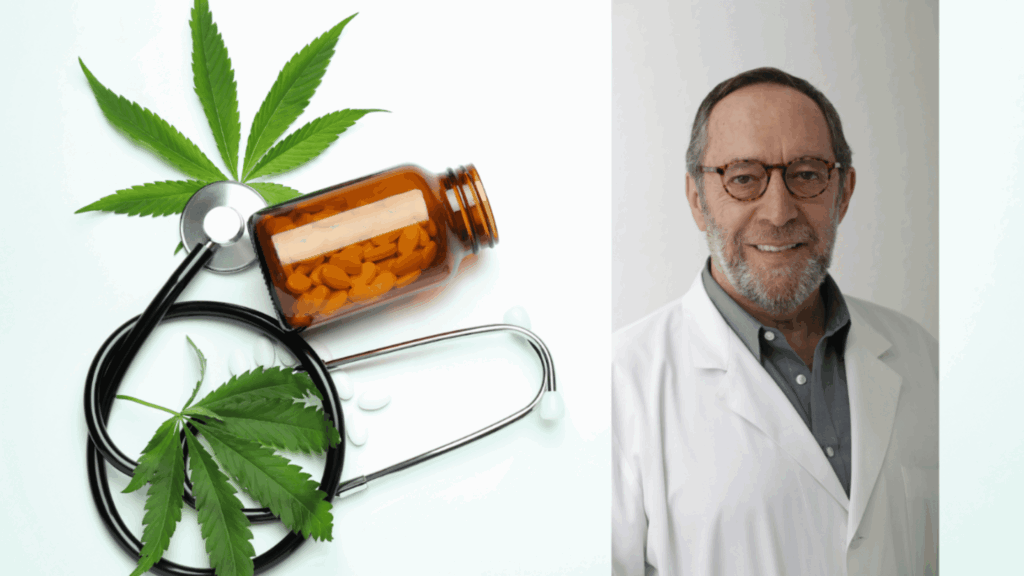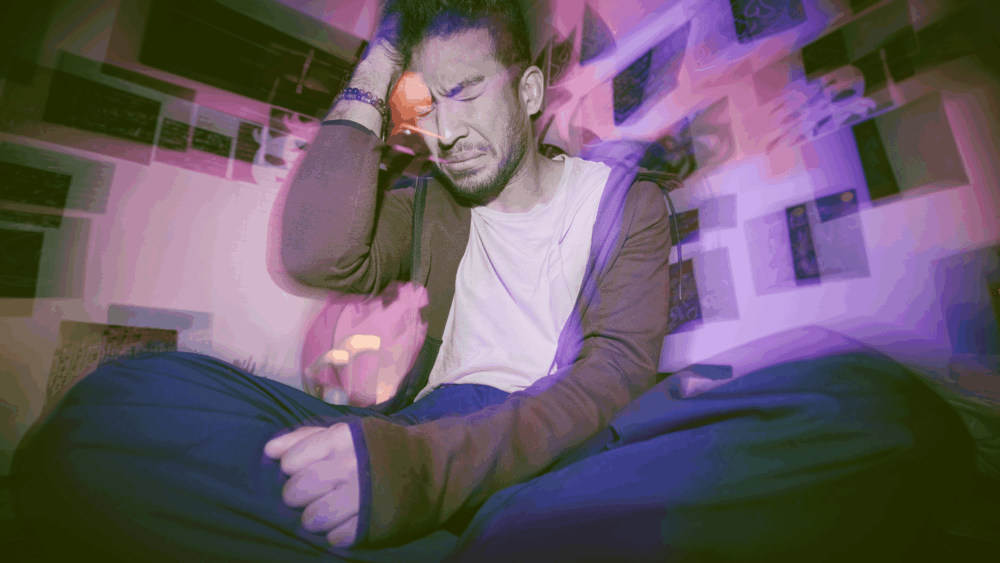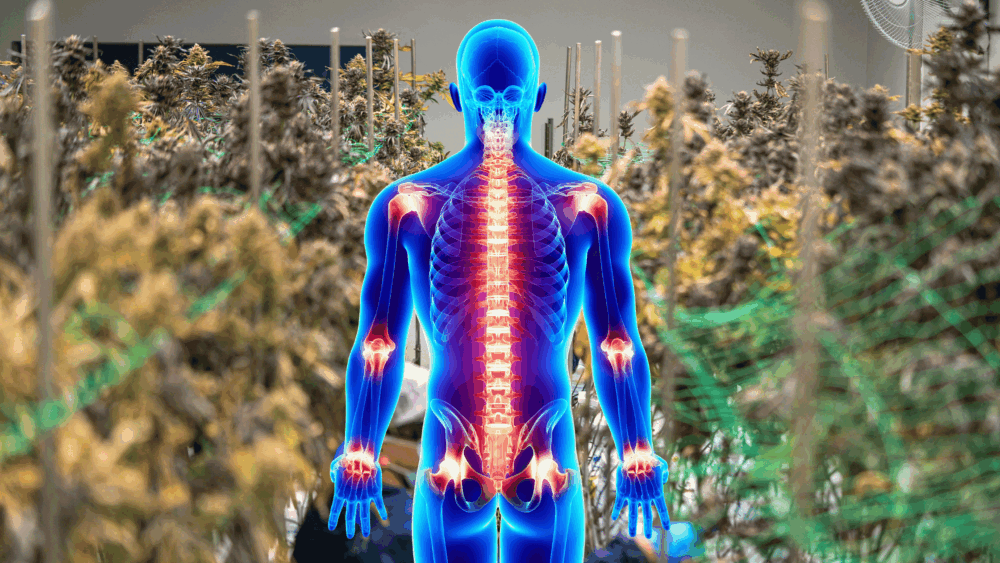
By Dr. Fernando Fandiño-Sende, MD – LifeCann MD
When I made the transition into cannabis medicine here in Miami, I never anticipated the profound transformation waiting ahead—not just for my patients, but for my entire perspective on what healing could look like. My office has become a place where people arrive carrying the weight of being dismissed, having exhausted conventional options, often hearing phrases like “this is your new normal” or “we’ve tried everything available.” What moves me most is witnessing how a different approach can reignite possibilities they thought were lost forever.
Why I Became a Cannabis Doctor in Miami
In my journey through conventional medicine, I watched too many patients become trapped in endless pharmaceutical cycles—bouncing between treatments that provided minimal relief while introducing complications that often overshadowed their original struggles. Through cannabis medicine I was able to expand my therapeutic arsenal and reconnect with the fundamental purpose that drew me to healing in the first place.
As a board certified cannabis doctor in Miami, I continue to be amazed by the remarkable changes I witness in my practice. The grandmother who hadn’t slept through the night in three years due to chronic pain, now gardening again. The veteran who couldn’t leave his house without panic attacks, slowly rebuilding his life. The child whose seizures were stealing her childhood, now thriving in school.
Understanding Your Options: Florida’s Qualifying Conditions
Let me walk you through what brings most of my patients to our practice. Florida recognizes several qualifying conditions for medical cannabis, and honestly, each one represents countless stories of struggle and hope.
When Pain Takes Over Your Life: Chronic pain is probably the most common reason people find their way to me. I’m talking about the kind of pain that changes everything—how you sleep, how you move, how you connect with the people you love. Traditional pain medications often become part of the problem rather than the solution.
I recently had a patient, Maria, who’d been on opioids for her fibromyalgia for over a decade. She came to me not because she wanted to get high—she was terrified of that—but because she was losing herself to the fog and dependency of her pain medications. Recent research from 2023 confirms what I see in my practice daily: medical cannabis often provides more comprehensive pain relief than opioids, addressing not just the physical sensation but the emotional toll that chronic pain takes.
When Seizures Steal Childhood: Working with families dealing with treatment-resistant epilepsy has taught me about courage I never knew existed. Parents who become researchers overnight, learning about cannabinoids and receptors because they refuse to watch their child suffer.
The FDA’s approval of Epidiolex wasn’t just a regulatory milestone—it was validation for every family who’d been fighting for their child’s right to treatment. The controlled trials showing significant seizure reduction don’t capture the joy of a family finally getting their child back.
The Invisible Wounds of Cancer: Supporting cancer patients through their treatment journey has been one of the most humbling aspects of my practice. When someone is fighting for their life, the last thing they should have to endure is constant nausea or losing their appetite when they need nutrition most.
The National Cancer Institute acknowledges what we see clinically—that cannabis can be a game-changer for cancer-related symptoms. But beyond the research, I see the relief in a patient’s eyes when they can finally enjoy a meal with their family again.
Trauma That Lives in the Body: PTSD isn’t just flashbacks and nightmares—it’s a body that forgot how to feel safe. Many of my patients with PTSD have tried everything: therapy, medications, lifestyle changes. They come to me exhausted from fighting their own nervous system.
The fact that the FDA recently approved groundbreaking clinical trials for PTSD treatment in veterans gives me hope that we’re finally taking trauma seriously. The preliminary studies are promising, but I don’t need studies to tell me that when someone sleeps peacefully for the first time in years, something profound is happening.
When Anxiety Takes Your Breath Away: Anxiety disorders can make the simplest tasks feel impossible. I’ve had patients who couldn’t go grocery shopping, couldn’t drive, couldn’t be alone. Traditional anxiety medications work for some, but others find themselves trading one prison for another.
The Silent Thief of Sight: Glaucoma often progresses quietly until significant damage is done. Cannabis’s ability to reduce intraocular pressure isn’t new knowledge, but it’s still remarkable to witness.
Fighting for Every Day: HIV/AIDS patients face complex symptom management, and cannabis often addresses multiple issues simultaneously—appetite, pain, mood, and sleep.
The Art of Healing: My Approach to Condition-Specific Dosing
Here’s what I wish every patient knew: there’s no magic formula. Being a condition-specific dosage expert means understanding that your body, your life, your needs are unique. What works for someone else might not work for you, and that’s completely normal.
I always start with this conversation: “What does better look like for you?” For some, it’s sleeping through the night. For others, it’s being present at their grandchild’s birthday party without wincing in pain. For many, it’s simply feeling like themselves again.
The global consensus recommendations suggest starting with CBD-predominant varieties at low doses—typically 5mg twice daily. But recommendations are just starting points. The real work happens when we collaborate on finding what works for you.
Chronic Pain: Finding Your Sweet Spot
I tell my chronic pain patients that we’re often looking for a balance. Maybe we start with CBD during the day to manage pain without affecting your ability to work or drive, then consider adding some THC in the evening for deeper relief and better sleep. Research shows that CBD works by blocking specific molecular pathways, but what matters more is how you feel.
For chronic pain, I typically start patients with a 20:1 or 10:1 CBD:THC ratio during daytime hours—usually 5-10mg CBD with 0.5-1mg THC. This often provides pain relief without impairment. For evening use, we might shift to a 1:1 or even 2:1 THC:CBD ratio to address both pain and sleep issues. The key is titrating slowly—increasing by small amounts every 3-5 days until we find your therapeutic window.
Some of my fibromyalgia patients do beautifully with microdosing approaches—taking tiny doses throughout the day rather than larger doses twice daily. We might start with 1-2mg of a balanced formulation every 4-6 hours, allowing for consistent relief without peaks and valleys.
PTSD and Trauma: Restoring Safety to Your Nervous System
For my PTSD patients, dosing is about more than symptom relief—it’s about helping their nervous system remember what safety feels like. I often start with pure CBD during the day (10-20mg) to address hypervigilance and anxiety without any psychoactive effects that might feel triggering.
Evening protocols often include small amounts of THC (1-3mg) combined with CBD to address nightmares and promote restorative sleep. Some patients benefit from specific terpene profiles—myrcene for its sedating effects, or linalool for its anti-anxiety properties. The goal is to create a sense of calm without feeling out of control.
One veteran I work with found that 15mg CBD in the morning and 5mg CBD with 2mg THC before bed transformed his ability to function. But it took us six weeks of careful adjustments to get there, and that patience was crucial to his success.
Epilepsy: Precision Matters Most
When working with seizure disorders, precision isn’t just important—it’s everything. Most of my epilepsy patients start with pure CBD oil, beginning at 2-5mg per kilogram of body weight daily, divided into two doses. We increase slowly—by 2-5mg/kg every week—until we achieve seizure control or reach our target dose.
For a 150-pound adult, we might start with 15-20mg of CBD twice daily, gradually increasing to 40-50mg twice daily over several weeks. Some patients need higher doses—up to 100mg twice daily—but we never rush this process. Every increase is carefully monitored, and I stay in close contact with patients and families during titration.
The beauty of CBD for epilepsy is that it rarely causes intoxication, even at higher doses. Parents often tell me their child is more alert and engaged on CBD than they were on traditional seizure medications.
Cancer Support: Adapting to Treatment Phases
Cancer patients need different approaches depending on where they are in their treatment journey. For chemotherapy-induced nausea, I often recommend starting cannabis 30-60 minutes before treatment. A combination of 2.5-5mg THC with 5-10mg CBD can be remarkably effective for both nausea prevention and appetite stimulation.
For cancer pain, we might use higher CBD ratios during the day (20mg CBD with 2-5mg THC) and shift to more balanced ratios in the evening. Some patients benefit from RSO (Rick Simpson Oil) protocols for more comprehensive cannabinoid therapy, especially those dealing with severe pain or appetite loss.
One of my patients undergoing radiation found that 10mg of a 1:1 CBD:THC tincture taken twice daily dramatically improved her quality of life during treatment. She could eat, sleep, and maintain her energy levels in ways that surprised her oncology team.
Anxiety and Mood Disorders: Starting Low, Going Slow
For anxiety, less is often more. High doses of THC can actually increase anxiety, so I typically start with pure CBD—5-10mg twice daily—and only consider adding small amounts of THC if needed for sleep or other symptoms.
Many of my anxiety patients find their sweet spot with 15-25mg of CBD daily, sometimes split into three doses. For those who benefit from some THC, we might add 0.5-1mg in the evening. The goal is calm alertness, not sedation.
I had one patient with severe social anxiety who found that 10mg of CBD an hour before social situations was life-changing. She went from avoiding social gatherings entirely to hosting dinner parties again.
Glaucoma: Timing and Consistency
For glaucoma patients, the timing of doses can be as important as the amount. Since the eye pressure-reducing effects of cannabis typically last 3-4 hours, some patients need to dose 3-4 times daily for consistent pressure control.
I usually start with 2.5-5mg of THC with equal amounts of CBD, taken every 4-6 hours. We monitor eye pressure closely with their ophthalmologist to ensure we’re achieving therapeutic benefits.
Sleep Disorders: The Evening Protocol
For insomnia, timing is everything. I typically recommend taking cannabis 1-2 hours before desired bedtime. A combination of 5-15mg CBD with 2.5-10mg THC often works well, with specific terpenes like myrcene or terpinolene to enhance sedating effects.
Some patients do better with pure CBD (25-50mg) if THC causes morning grogginess. Others need the full spectrum approach. The key is finding what gives you restorative sleep without next-day impairment.
The Importance of Delivery Methods
How you take your medicine matters enormously. Sublingual tinctures offer precise dosing and faster onset—perfect for breakthrough pain or acute anxiety. Edibles provide longer-lasting effects, ideal for all-day symptom management or sleep issues.
Vaporizing offers the fastest onset and easiest dose titration—you can take a small puff, wait 15 minutes, and assess. This is particularly useful for nausea or acute symptoms.
For those interested in targeted relief, topical applications can address localized pain without any systemic effects.
Working Together: Your Dosing Journey
Remember, finding your optimal dose is a collaborative process. I provide the medical expertise and safety guidelines, but you provide the crucial feedback about how you feel, how you function, and what “better” looks like in your daily life.
Our detailed dosing recommendations are always starting points, not destinations. Some patients find relief with tiny doses that barely register to others. Some need higher amounts to achieve the same therapeutic benefit. Neither is right or wrong—they’re just different.
One thing I’ve learned: patience is medicine too. Your body needs time to adjust, to find its rhythm with these new compounds. I’m here to guide that process, not rush it. And I’m always available for questions, concerns, or adjustments along the way.
More Than Just Getting Your Card
When patients ask about getting their medical marijuana card in Florida, I always explain that the card is just the beginning. It’s like getting a library card—it gives you access, but you still need to know how to find what you’re looking for.
That’s why I spend so much time talking about different consumption methods. Your grandmother might do great with a tincture under her tongue, while you might prefer the precise dosing of edibles. There’s no right or wrong way—only what works for your body and your life.
I love watching first-time patients discover Miami’s dispensaries. The budtenders have become such an important part of the healing ecosystem, and I’m grateful for their patience in helping patients navigate this new world.
For those dealing with specific symptoms like insomnia or nausea, we develop targeted strategies. Sleep medicine with cannabis isn’t just about feeling drowsy—it’s about addressing the racing thoughts, the physical discomfort, the anxiety that keeps you staring at the ceiling at 3 AM.
What Gives Me Hope for the Future
The research coming out now validates what I’ve been seeing in my practice for years. The UK’s major NHS trials studying CBD and THC combinations, the evolving understanding of cannabis in pain management—it all points toward a future where cannabis medicine is fully integrated into healthcare.
But honestly? What gives me the most hope isn’t the research. It’s the text message from a patient saying they played with their kids at the park for the first time in months. It’s the veteran who called to tell me he took his wife on a date—their first in years. It’s the mother who doesn’t have to watch her child suffer anymore.
Finding Your Path to Healing
If you’re reading this and wondering if medical cannabis might help you, I want you to know: you don’t have to suffer in silence. You don’t have to accept that “this is just how it is.” And you definitely don’t have to figure this out alone.
For those who qualify for a medical marijuana card in Florida, we offer same-day card services because I know that when you’re suffering, every day matters.
What I promise every patient is this: I’ll listen to your story, I’ll respect your concerns, and I’ll work with you to find an approach that honors both the science and your individual needs. As your cannabis doctor in Miami, I’m not just here to write recommendations—I’m here to be your partner in rediscovering what it feels like to live well.
The journey to healing isn’t always linear, and cannabis medicine isn’t a magic cure-all. But for many of my patients, it’s been the key to unlocking a quality of life they thought was gone forever. And in my experience, that possibility—that hope—is always worth exploring.
Dr. Fernando Fandiño-Sende is a board certified physician specializing in medical cannabis treatment at LifeCann MD in Miami. His practice focuses on personalized, evidence-based cannabis medicine, helping patients throughout Florida access safe, effective treatments tailored to their individual needs and life circumstances.


